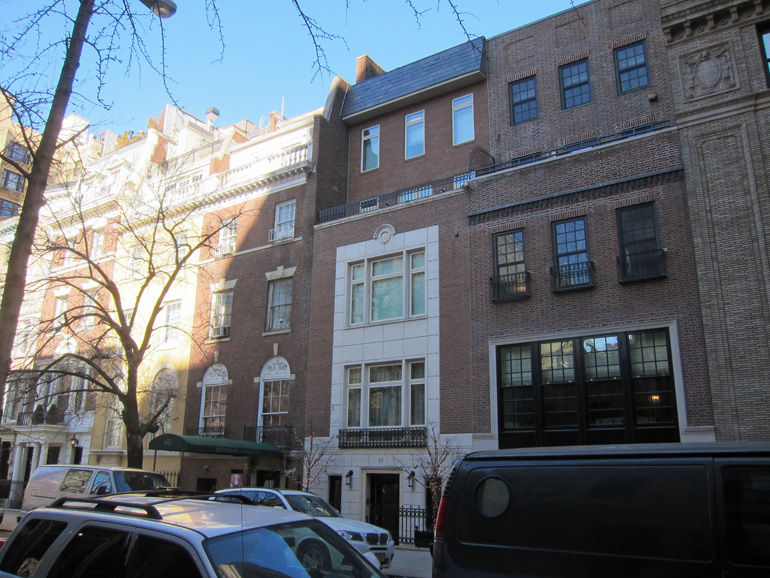Gotham Diary:
Why Don’t You…?
28 January 2013
… set up a daily Web log, and begin each day by spouting off whatever comes into your pretty litte head? Oh, the blogger Diana Vreeland might have been! Some will argue that she might have been more at home at Twitter, and some at Tumblr, but this is to quibble. The short forms of the Internet would have suited her down to the ground, and how much more interesting to broadcast her gnomic utterances about pink and fringe and freckles and allure instead of bombarding her bewildered staff with memoranda. Vreeland believed, religiously, in the power of being maximally alive, of attending to possibilities of beauty in everyday life while not disdaining the sheer glamour (enjoyed to some degree by herself, but unbegrudged by much luckier people) of aristocratic birth and/or great wealth. She was blind (and deaf) to a great deal in the world, but what she cherished she embraced with contagious, adorable enthusiasm. She might make you laugh at something of the things that she said (“The serpent should be on every finger and wrist … we cannot see enough of them”), you would never laugh at her. It would be as senseless as laughing at a beating heart.
Performance is all that I cared about as a child and it’s all that I care about now. I don’t go to a play to see a great play. I go to see a great interpreter. Everything is interpretation. I think stars are the only thing we have. We have a star, we follow a star … we may throw that star out tomorrow, but today, without a star, we wouldn’t move at all. Group formation’s not for me! (Allure, p. 104)
Vreeland constently argued that fashion was not art — largely, I suspect, because she associated art with Victorian ponderousness, but also because the world of art was backed up by a library of histories and theories that she didn’t have the patience to master. (Thrown out of Brearley, remember.) I think that she was right: a dress is not in itself a work of art. But it partakes of art when it is worn by a woman of style: style is the art. Style is closely allied, I believe, to ballet — it is always on the move, which is why modern fashion photographers have worked so hard to capture motion in still photography. Style is anti-monumental, anti-ideal. There is only the moment. Style is as emphemeral as a great theatrical performance: you’re either lucky enough to be there to see it, or you’re not. (Reading about the magic of performers of the past ought to sharpen our attentiveness to the wizardry of those we can be in the same room with.) But style is more available to all of us, which is why it was not fatuous of Vreeland to urge everyone to develop one. Dance and the theatre require formidable discipline of an athletic nature, but the discipline of style begins with understanding who and what you are.
Vreeland was a great curator — in today’s sense. (In the traditional sense, she was not so great, as her unwilling colleagues at the Costume Institute witnessed.) She routinely sifted through masses of objects and ideas and picked up two or three that interested her. (I remember learning about the I Ching in the pages of Vogue. I looked at my mother’s copies not because of the dresses, although the locations were often intriguing, but because of the novelty: you never knew what people were going to be talking about.) She was attracted to things that enhanced the palpability of fantasy, but “fantasy” was really just a world view. Vreeland dreaded banality above all things, but she never had much to say about it, because why would you talk about the unpleasant? As a result, you’re left wondering what actually strike her banal — banale, darling — especially given her aptitude for finding marvels in everyday things.
So it’s not what she did that we ask about Vreeland. Was she an important editor at Harper’s Bazaar? An world-significant editor at Vogue? The goddess who filled the halls of the Metropolitan Museum of Art with the grand glamour of the great palace that it was built to be? It doesn’t matter. It’s how she was, and to find that out, you need only follow her blog, if you can find it.
***
Vreeland once said, I recall, that the essence of fashion is rejection. (This is not a line that Alexandra Mackenzie Stuart’s solidly engrossing biography captures.) But I sense that Vreeland’s idea of rejection was always temporary. What you reject today, for whatever reason of suitability, you might accept tomorrow. The aphorism also reflects that brutal truth about life that, whenever we are doing something, we are not doing all sorts of other things. In the end, there is always the embrace. Â
Actually, and I write this having just re-read Allure from front to back, Vreeland said something else.
“Elegance,” I said, “is refusal.”

